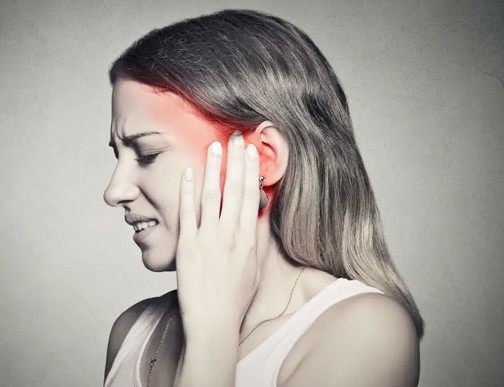
What is
Trigeminal Neuralgia?
Trigeminal neuralgia (TN), also known as prosopalgia or Fothergill’s disease, is a neuropathic disorder characterized by episodes of intense pain in the face, originating from the trigeminal nerve( 5th cranial nerve). The clinical association between TN and hemifacial spasm is the so-called tic douloureux
Sex and Age Predominance
Trigeminal neuralgia affects women more often than men, and it’s more likely to occur in people who are older than 50.
Disease Burden
It is estimated that 1 in 15000 to 20000 person suffers from TN.

What is Trigeminal Nerve
The trigeminal nerve is a paired cranial nerve that has three major branches: the ophthalmic nerve (V1), the maxillary nerve (V2), and the mandibular nerve (V3). Trigeminal neuralgia most commonly involves the middle branch (the maxillary nerve or V2) and lower branch (mandibular nerve or V3) of the trigeminal nerve.
The trigeminal nerve is a mixed cranial nerve responsible for sensory data such as tactician (pressure), thermoception (temperature), and nociception (pain) originating from the face above the jaw line; it is also responsible for the motor function of the muscles of mastication, the muscles involved in chewing but not facial expression.
What is Trigeminal Nerve
The trigeminal nerve is a paired cranial nerve that has three major branches: the ophthalmic nerve (V1), the maxillary nerve (V2), and the mandibular nerve (V3). Trigeminal neuralgia most commonly involves the middle branch (the maxillary nerve or V2) and lower branch (mandibular nerve or V3) of the trigeminal nerve.
The trigeminal nerve is a mixed cranial nerve responsible for sensory data such as tactician (pressure), thermoception (temperature), and nociception (pain) originating from the face above the jaw line; it is also responsible for the motor function of the muscles of mastication, the muscles involved in chewing but not facial expression.
Characteristics of Pain
- LOCATION: The pain may be felt in the ear, eye, lips, nose, scalp, forehead, cheeks, teeth, or jaw and side of the face.
- SENSATION: The attacks are said by those affected to feel like stabbing electric shocks, burning, pressing, crushing, exploding or shooting pain that becomes intractable.
- If you have trigeminal neuralgia, even mild stimulation of your face — such as from brushing your teeth, shaving, eating or putting on makeup — may trigger a jolt of excruciating pain. Patients may describe a trigger area on the face so sensitive that touching or even air currents can trigger an episode.
- The episodes of intense pain may occur paroxysmally.
- AGGRAVATION: Wind, high-pitched sounds, loud noises such as concerts or crowds, chewing, and talking can aggravate the condition in many patients.
- TYPICAL ATTACK: Usually affect one side of the face at a time, lasting from several seconds to a few minutes, and repeat up to hundreds of times throughout the day. The pain also tends to occur in cycles with remissions lasting months or even years.
Signs of Systemic Development
- Rapid spreading,
- Bilateral involvement , or simultaneous participation with other major nerve trunks.
- Examples of systemic involvement include multiple sclerosis or expanding cranial tumor.
- Examples of simultaneous involvement include tic convulsive (of the fifth and seventh cranial nerves) and occurrence of symptoms in the fifth and ninth cranial nerve areas.
What causes TN
Several theories exist to explain the possible causes of this pain syndrome. New leading research indicates that :
- An enlarged blood vessel – possibly the superior cerebellar artery – compressing or throbbing against the microvasculature of the trigeminal nerve near its connection with the pons.Such a compression can injure the nerve’s protective myelin sheath and cause erratic and hyperactive functioning of the nerve.
- Aneurysm (an outpouching of a blood vessel)
- AVM (arteriovenous malformation)
- Tumor( in cerebellopontine angle or in posterior cranial fossa)
- Arachnoid cyst in the cerebellopontine angle
- Traumatic event such as a car accident.
- Postherpetic neuralgia( if the trigeminal nerve is damaged).
- Idiopathic (When there is no [apparent] structural cause) .
Chronic nerve entrapment results in demyelination primarily, with progressive axonal degeneration subsequently. It is, therefore widely accepted that trigeminal neuralgia is associated with the demyelination of axons in the Gasserian ganglion, the dorsal root, or both.

Trigeminal Neuralgia Causes
Management:
- Medical:
- The anticonvulsant carbamazepine is the first line treatment
- Second line medications include baclofen,(Tegral 200) lamotrigine, oxcarbazepine, phenytoin, gabapentin, pregabalin, and sodium valproate.
- Duloxetine ( antidepressant) has been be used in some cases of neuropathic pain.
- Opiates such as morphine and oxycodone can be prescribed.:
- Surgical
- Microvascular decompression appears to result in the longest pain relief.
- Percutaneous radiofrequency thermorhizotomy
- Gamma knife radiosurgery
- Percutaneous surgical procedure known as balloon compression
- Glycerol injections (involve injecting an alcohol-like substance into the cavern that bathes the nerve near its junction. This liquid is corrosive to the nerve fibers and can mildly injure the nerve enough to hinder the errant pain signals).
The evidence for surgical therapy is poor. Surgery side-effects include:
- Frequently numbness post procedure.
- The effectiveness decreases with time.
Thus, you see that Trigeminal Neuralgia is a very difficult and almost incurable illness according to neurologists, no satisfactory and permanent cure available in allopathy. The following chronic case of trigeminal neuralgia is cured by constitutional homoeopathic treatment which individualizes the patient as a specific individual.
